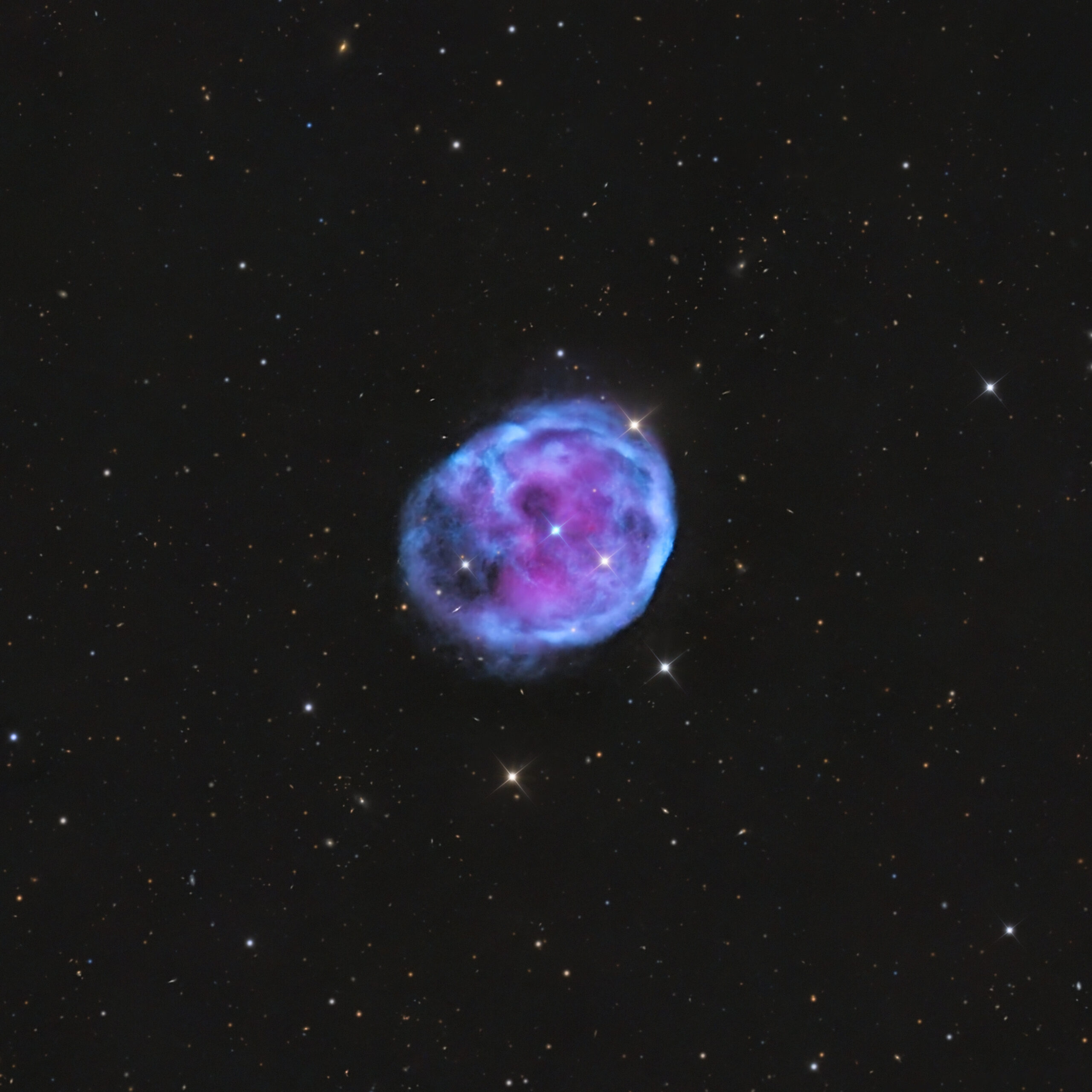
NGC 246 is a Planetary Nebula situated 1600 light years away in the constellation of Cetus. It is the first known planetary nebula with a hierarchical triple star system at its center.
The central star is a 12th magnitude white dwarf star moving through space at a rate of 80 kilometers per second. This star at the core of NGC 246 is part of a binary pair. The primary star is highly evolved and has exhausted its nuclear fuel.
The rapidly moving gases on the nebula’s leading edge have the same motion as the central star and the gas slows down and compresses as it collides with the interstellar medium. The gas clouds on the shell’s trailing edge continue to expand freely.
The complex interwoven structure of NGC 246’s blue outer ring is most likely due to the action of shock waves. As the compressed outer shell hits the interstellar medium, it heats up and becomes unstable. The ring starts to break up and fragment. Collisions between the fast winds of expelled gas and the shocked shell could explain the various lobes and darker regions visible in the leading half of NGC 246’s interior shell.
Imaged in LRGB and H alpha on my PlaneWave CDK 700 at Observatorio El Sauce, Chile.
Image Processing and Acquisition: Mike Selby